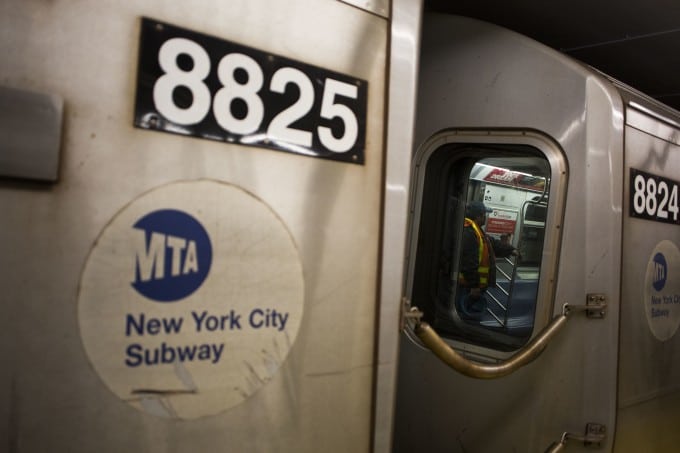Consumer demands for ‘instant gratification’ require right-now payments

If you thought the past year brought aggressive expectations from consumers, you might want to brace yourself for the next 12 months. And you can’t really blame them.
That mentality isn’t greedy or unfounded or above and beyond the realm of reason. After all, in a world where social security numbers were compromised in an instant thanks to the Equifax hack, why shouldn’t consumers be able to reap the rewards of the positive flipside of that equation as well?
As an industry, we owe it to our customers and end users to deliver banking and payments that function in real-time and meet their expectations for near-instant gratification. With that nirvana in mind, here are five areas that I anticipate we’ll see heavy investment and progress in the next year:
 The MTA’s move to contactless payments is one way companies and agencies are responding to changing consumer demands for easier payments, according to Gemalto’s Paul Kobos. Bloomberg News
The MTA’s move to contactless payments is one way companies and agencies are responding to changing consumer demands for easier payments, according to Gemalto’s Paul Kobos. Bloomberg NewsP-to-P and Merchant Payments. Venmo has been steadily amassing active users, and Zelle just released some impressive growth and transaction volume numbers, so there’s no doubt that P-to-P payments are here to stay.
The main lingering obstacle with regards to making P-to-P payments truly real-time from front to back continues to revolve around enrollment difficulties. If that process isn’t smoothed out, instant gratification is a pipedream. The other area where I presume we’ll see continued innovation and investment is around tying those P-to-P payment options, whether Venmo, Zelle, Apple Pay Cash or Square’s Cash App, into both online and brick-and-mortar retailers. If consumers receive money from a friend, they want to be able to turn around and use those funds immediately at a merchant point-of-sale, without a window of waiting or stipulations on where that money will be accepted.
Contactless Transit Payments. One thing I’ve found to be universally true is that consumers won’t compromise speed and efficiency on their daily commutes. Cash and punchcards are dated and probably should’ve been left in 2010, much less 2017, but we needed a reliable, frictionless, just-as-immediate substitute.
Encouragingly, the MTA has active plans to implement a contactless payment system this year, Chicago led the way with a card/mobile payment combo, and even midsized metro areas like Salt Lake City and Portland have moved toward contactless. We’ll no doubt see even more cities using these payment systems as a blueprint to meet commuter expectations for public transit payment over the next couple years.
Instant Issuance. We haven’t seen instant issuance, through which banks can print new or replacement credit cards on the spot, take off in any widespread way, but I bet we will this year, at least with smaller banks that seek to encourage in-branch visits.
The in-branch or in-kiosk technology has become affordable enough for banks (or credit unions) of any size to make the investment and realize value from it, while cards have continued being replaced (whether as a precaution or a reaction) at an impressive rate. Sometimes waiting a few days to get that replacement card in the mail and having to remember to activate it just won’t do, so mid-tier banks can and will turn to instant issuance as a path to meet those consumers’ expectations and foster direct customer contact as a competitive edge.
Online and Mobile Banking. Although we’ve all casually thrown the word “frictionless” around when it comes to describing online and mobile banking, convenience, real-time functionality and security have always been at odds. That becomes particularly evident when asking millennials about their banking priorities, perceptions and preferences. (If you don’t believe me on that, take a peek at the IBM Security: Future of Identity Study.) I’m foreseeing 2018 as the year when a truly frictionless user journey in mobile banking, investing and budgeting apps does not automatically equal reduced security. Consumers’ security mandates will finally be able to coexist with demand for convenience. We’ll have biometric-based authentication to thank for that, along with password managers.
Fraud Detection, Credit Checks and Freeze. Thanks to the far-reaching Equifax incident I mentioned earlier, consumers are vastly more aware of their personal data and financial security as well as responsive to fraud and data breaches than ever before. That’s a good thing, for sure, but that heightened awareness brings heightened expectations along with it.
If their account or credit card has been compromised, they want to know in a matter of minutes or hours, not days, weeks or (dare I say) months. I expect we’ll see banks, fintech services and tech vendors alike figuring out methods to detect, alert and rectify fraud and data breaches more efficiently and quickly. And to that point, it shouldn’t be so complicated to check and freeze your credit when the situation demands it. Credit bureaus, looking straight at you here. They’ve got a long way to go in making the customer experience more pleasant and real-time.
Contactless payments ISO and agent Real-time payments Retailers Venmo Zelle

